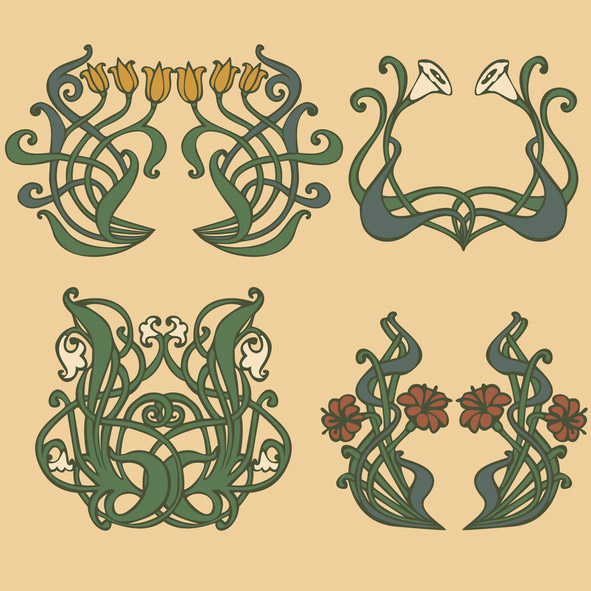 Of all the iconoclastic art movements of the late nineteenth and twentieth centuries, Art Nouveau (literally “new art”) was the most self-consciously modern. It broke with the long-standing European tradition of realistic painting that conveyed a lifelike three-dimensionality. Instead, Art Nouveau artists opted for a two-dimensional stylization of natural forms, with an emphasis on pattern.
Of all the iconoclastic art movements of the late nineteenth and twentieth centuries, Art Nouveau (literally “new art”) was the most self-consciously modern. It broke with the long-standing European tradition of realistic painting that conveyed a lifelike three-dimensionality. Instead, Art Nouveau artists opted for a two-dimensional stylization of natural forms, with an emphasis on pattern.
Likewise, the early modern dancers abandoned long-standing European dance traditions, breaking out of the set vocabulary and spatial geography of classical ballet.
As he emerged as a leading figure of modern dance in Europe, Laban’s familiarity with Art Nouveau not only inspired his search for new forms, but also provided him with a deep understanding of how to create beautiful patterns.
Find out more in my October online workshop, “His Hand and Head: How Laban Created Movement Patterns,” offered through the Laban/Bartenieff Institute of Movement Studies.
